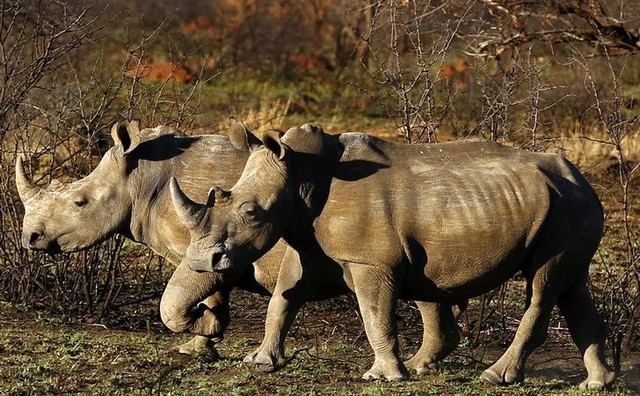Rwanda brings rhinos back to boost tourism


A decade after poachers wiped out its native population of rhinos, Rwanda has reintroduced the animals to its national parks after flying up a group of 10 from South Africa on Tuesday.
The group will live at Rwanda’s Akagera National Park, protected by rangers trained in anti-poaching and an electric fence, authorities said.
Rhino horn, used as daggers and in traditional Asian medicine, is more expensive than gold or cocaine. It can sell for more than $50,000 per kilo.
“The (original) rhinos disappeared because there were cases of poaching,” Belise Kariza, the chief tourism officer at Rwanda’s development board, told Reuters.
“With rhinos reintroduced in Akagera National Park we now actually have a Big Five definition. Definitely, that’s going to attract the attention of tourists,” she said, referring to Africa’s famous Big Five animals – lion, elephant, buffalo, rhino and leopard.
Tourism is a key foreign exchange earner in East Africa. Rwanda, which is still heavily dependent on foreign aid after the 1994 genocide tore the nation apart, has been seeking to boost the sector.
Tourism generated $404 million from 1.3 visitors in 2016, and revenues are expected to climb 14 percent to 460 million in 2017.
Jes Gruner, the Akagera National Park manager, told Reuters the park was expecting nine more rhinos next week.
The rhino arrivals follow the successful reintroduction of lions into the park in 2015. The number of lions has increased from seven to 17.
“Right now we are going to focus on lions and rhinos but another species that was wiped out from Akagera is the wild dog so it is something to be considered in the future,” Gruner said.
Endangered gorillas on the slopes of the Virunga Mountains are Rwanda’s main tourist attraction, generating 90 percent of tourism revenues through trek permits, travel and accommodation.
Last year Akagera earned $1.3 million from 36,000 visitors.
Rwanda has to compete for tourists with regional heavyweights Kenya and Tanzania, both far bigger countries with a much more established tourist industry.
Reuters